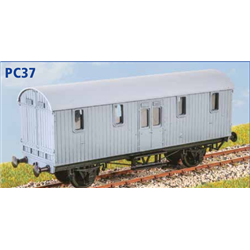A snap together model kit is a type of model assembly kit where the pieces simply snap together without the need for...
No products
Product successfully added to your shopping cart
There are 0 items in your cart. There is 1 item in your cart.
Search Tips
How long should my freight train be?
To model a freight train prototypically, one must first know how long the prototype is, but that information is difficult to come by as there is no set length.
That statement may not be helpful for modellers looking for a definitive answer, but 'there is no definitive answer' is the answer.
The shortest real-life freight train had just a single wagon, whereas the longest was an Australian BHP Iron Ore train weighing in at seven kilometres (4.5 miles) long and comprising 682 wagons. But tomorrow, that may change again.
If you're trying to determine how long your freight train should be, there usually has to be some modeller's compromise. Learn to trust your eye when constructing a train, if it's too short, it will appear so.
Another factor will be how much your locomotive can pull without its wheels slipping. The size of your layout will also have bearing because generally, modellers who get anywhere close to a realistically sized consist have incredibly generous baseboards, and operating such trains on a 4 x 6 board will only draw attention to its lack of size. So try to keep everything in perspective.
Mixed freight trains (or pick up goods) make excellent choices for modellers with little space to spare. That's because, although they were often fairly lengthy in real-life, by definition, they progressively lost parts of their consist the further into a journey or down a branch line they progressed, so we're used to seeing relatively short versions of such trains.
The flip side of the coin is the bulk movement of a single type of freight. These types of train would typically make the most of a single movement from supplier to distribution point, thus, such trains can be incredibly long and remain so for the entirety of the journey. For that reason, those types of trains are difficult to model with any great realism.
Whatever type of freight train you decide to model on your layout, a great tip to stop it looking too out of place is to use your platforms as reference. Your platforms are also likely to be undersized, so use them as a starting point to tie everything compromised together. If your freight train in real life fits into the platform of a station similar to one on your layout, then mirror this with the length of your train, likewise, a train that dwarfs a real platform will look just fine doing the same on the model.
Click here to receive the tips weekly in your mailbox. You can unsubscribe at any time.










